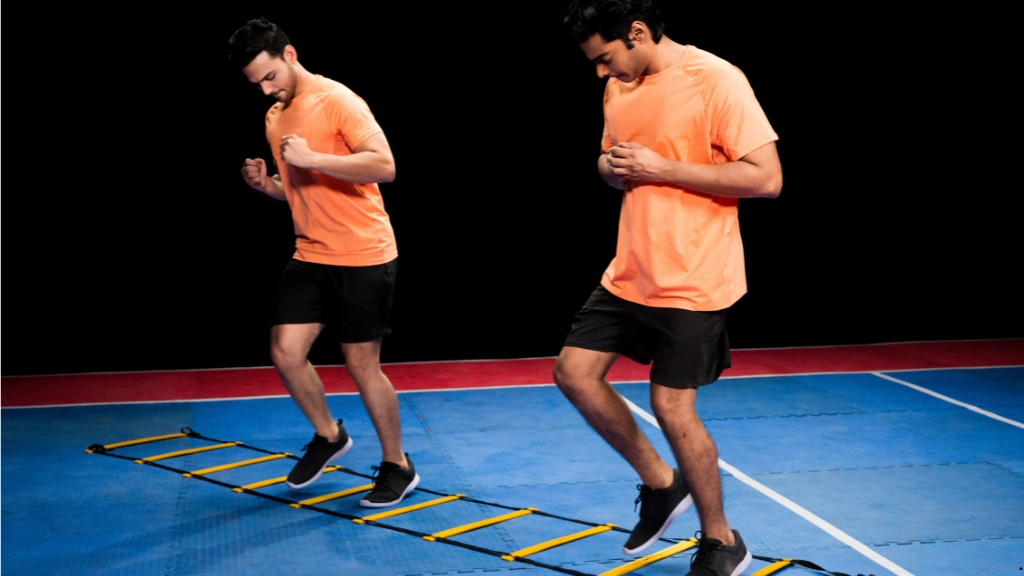Practice drills can make or break your performance when it’s time to shine on game day. I’ve seen how the right drills not only sharpen skills but also build the confidence needed to excel under pressure. The key isn’t just repetition—it’s practicing with purpose and intention.
When every movement and decision in practice mirrors real-game situations, you’re not just training your body—you’re training your mind. It’s about bridging the gap between preparation and execution so that when the whistle blows, you’re ready to dominate. Let’s explore how to make every drill count and turn practice into game-day success.
Importance Of Practice Drills In Game Performance
Practice drills directly impact game performance by sharpening both individual and team-focused skills. Structured drills drive consistency, reduce errors, and improve readiness for challenging scenarios.
Building Skills And Confidence
Drills refine technical skills and foster repetition for better muscle memory. Consistently working on shooting, passing, or footwork ensures players respond instinctively in games. Confidence grows when players can rely on practiced abilities under pressure.
Enhancing Team Collaboration
Team drills strengthen communication, timing, and trust. Simulating in-game strategies, such as coordinated plays or defensive setups, builds synergy. Teams execute seamless plays during competitive moments when these drills are prioritized in practice.
Bridging The Gap Between Practice And Game Day
Game-like drills prepare players for high-pressure situations by replicating real scenarios. Using scrimmages or situational exercises helps players make quicker decisions. Translating these rehearsed actions to match conditions ensures smoother transitions from practice to gameplay.
Key Elements Of Effective Practice Drills
Effective practice drills elevate performance by targeting specific skills and optimizing preparation for game-day scenarios. Drills structured around clear goals and consistent execution ensure the most impactful results.
Setting Clear Objectives
I prioritize identifying specific skills or strategies before starting a drill. Clear goals provide players with a focused purpose, improving skill acquisition and reducing wasted effort. For example, defensive drills may target blocking or intercepting, while offensive drills might aim to improve passing accuracy or shooting techniques. Measurable objectives like completing a set number of successful plays or reducing turnovers within a specific time frame enhance accountability.
Simulating Real-Game Scenarios
Practice feels more impactful when it mirrors real-game situations. I ensure drills replicate the tempo, intensity, and decision-making required during competitive play. Scenarios like full-court press drills or two-minute offense schemes train players to adapt under pressure while maintaining composure. By integrating opponent-like challenges and time constraints, players build confidence and readiness for unpredictable moments.
Ensuring Repetition And Consistency
Repetitive execution is essential for mastering any skill. I encourage players to perform drills consistently, focusing on proper technique to develop muscle memory. For instance, repetition in free-throw shooting or dribbling drills sharpens reflexes and eliminates second-guessing during games. Maintaining consistency across sessions ingrains patterns, enabling players to perform instinctively when faced with high-stress situations on the court.
Types Of Practice Drills For Game-Day Success
Game-day excellence stems from consistent, purposeful drills that cater to individual, team, and positional needs. Each type addresses key aspects of performance, creating comprehensive preparedness.
Individual Skill Drills
These drills focus on improving personal abilities essential to specific game components. Ball-handling in basketball, passing accuracy in soccer, and batting technique in baseball are examples. Repetition builds precision, while integrating time restrictions or obstacles mimics in-game pressure. For instance, a basketball player perfects free throws with limited attempts, enhancing efficiency under stress.
Team-Based Drills
Team drills enhance communication, timing, and cohesiveness. Scrimmages, play setups, and reaction exercises integrate strategies and foster adaptability. By running set plays repeatedly, a soccer team refines passing sequences and learns to exploit defensive weaknesses. These drills help teams transition from practice to execution seamlessly.
Position-Specific Drills
Drills tailored to positions refine unique responsibilities and technical skills. A quarterback may work on throwing accuracy for football, while goalkeepers focus on shot-stopping reflexes in soccer. Position-focused drills mirror real scenarios, ensuring players handle their roles under competitive conditions.
Tips For Maximizing Practice Drill Benefits
Effective practice drills require strategy and mindfulness to ensure peak efficiency. By focusing on feedback, intensity balance, and measurable progress, players can refine their preparation for game-day success.
Incorporating Feedback And Adjustments
I make feedback a central part of my practice routine. Immediate, specific, and actionable input allows me to correct mistakes and refine techniques in real-time. Peer reviews and coach observations also offer diverse perspectives, helping identify weaknesses I might overlook. After each drill, I reflect and adjust my approach to address skill gaps or inefficiencies, ensuring continuous growth.
Balancing Intensity And Recovery
Maintaining an efficient balance between high-intensity drills and recovery prevents burnout. During practices, I alternate between rigorous sessions and lighter activities to sustain energy and focus throughout. Recovery periods aren’t idle; I use them to work on mental strategies, like visualizing game scenarios or planning positional tactics, ensuring that downtime remains productive.
Tracking Progress Over Time
Consistently monitoring progress gives me clear insights into performance improvements. I rely on metrics like completion rates, response times, or accuracy levels to measure the effectiveness of my drills. Regularly reviewing this data helps me set measurable goals and adjust training plans, ensuring every session builds on previous successes while preparing for future demands.
Common Mistakes To Avoid In Practice Drills
Avoiding errors in practice drills ensures optimal skill development and improves game-day readiness. Recognizing common pitfalls can help maintain effectiveness and prevent setbacks.
Overtraining And Burnout
Overtraining often leads to reduced performance and increased injury risk. Players focusing solely on high-intensity drills without recovery time face physical and mental exhaustion. To avoid this, I maintain a balance between rigorous practice and rest, allowing full recovery and maintaining peak performance levels.
Neglecting Mental Preparation
Ignoring mental preparation hinders decision-making and focus during critical moments. Drills addressing only physical skills leave players unprepared for game-pressure scenarios. By incorporating visualization and scenario-based thinking into practice, I ensure my mind is as ready as my body for competition.
Rigidly Sticking To A Single Approach
Relying on one approach limits adaptability in dynamic game situations. Sticking to repetitive drills without variation prevents growth in unpredictable scenarios. I mix different drill formats, emphasizing adaptability, to simulate real-game challenges and enhance flexible decision-making skills.
Conclusion
Mastering practice drills that translate to game-day success requires purpose, strategy, and adaptability. By focusing on realistic scenarios, targeted skills, and consistent execution, players and teams can build the confidence and readiness needed to excel under pressure.
The right balance of intensity, recovery, and feedback ensures steady growth while minimizing risks like burnout. With a mindful approach to preparation, every drill becomes an opportunity to sharpen instincts, strengthen teamwork, and elevate overall performance when it matters most.



